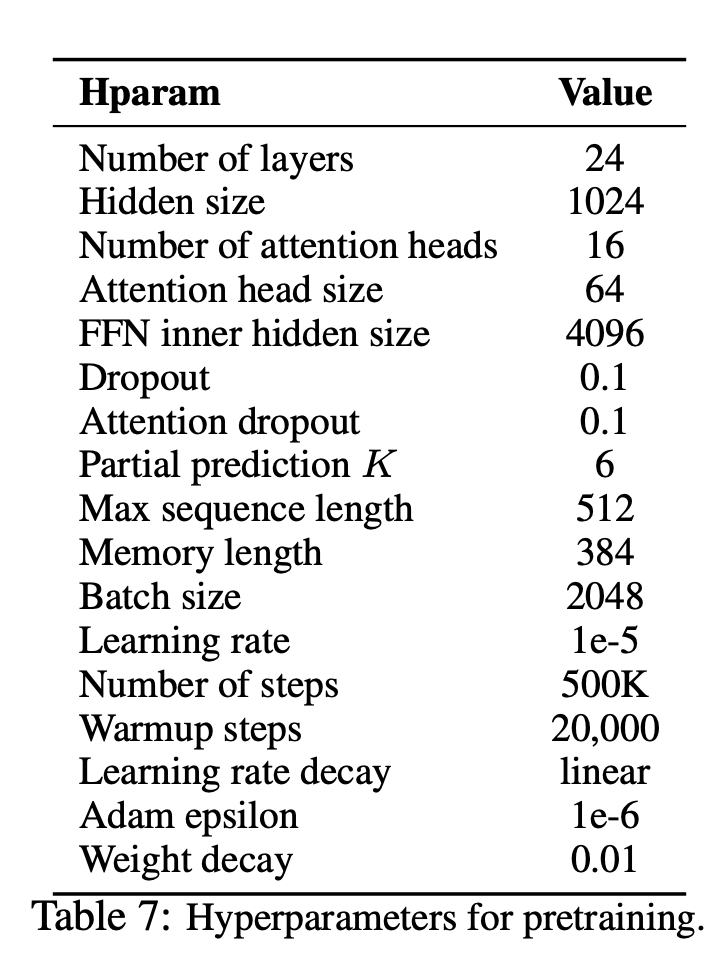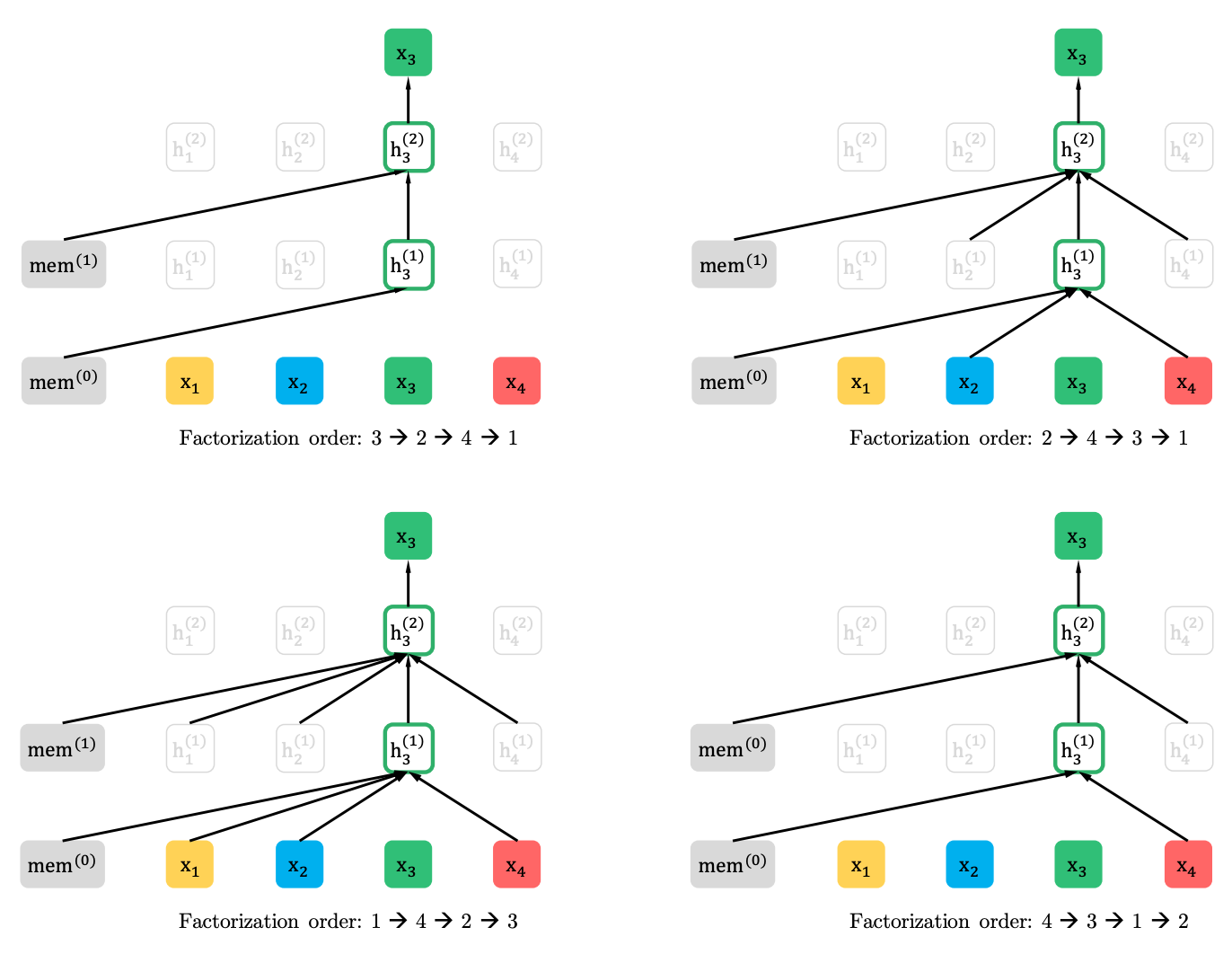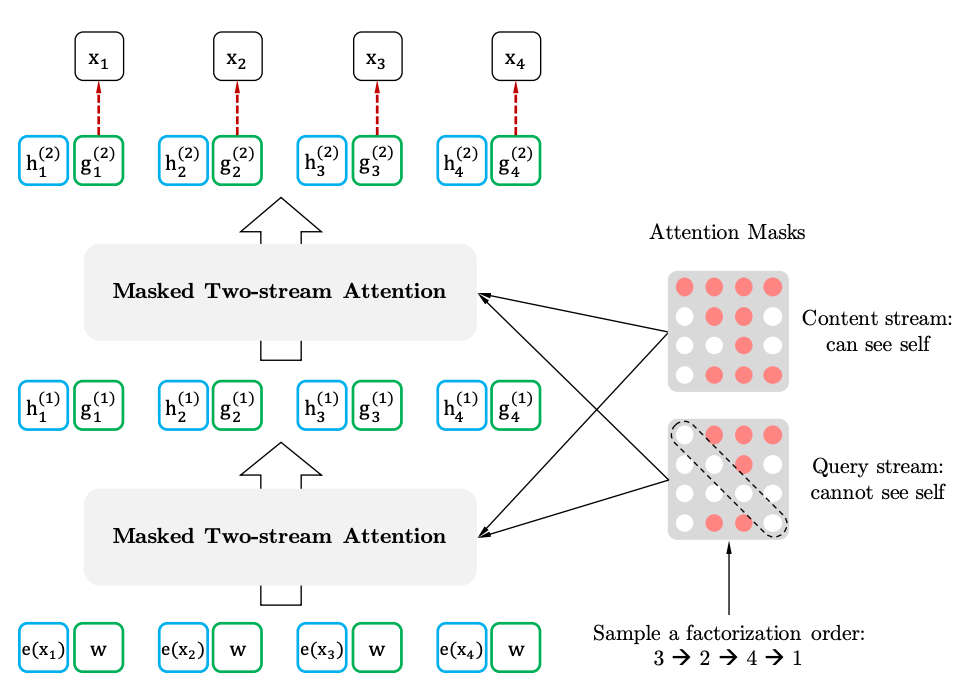graykode / Xlnet Pytorch
Projects that are alternatives of or similar to Xlnet Pytorch
XLNet-Pytorch arxiv:1906.08237
Simple XLNet implementation with Pytorch Wrapper!
You can see How XLNet Architecture work in pre-training with small batch size(=1) example.
To Usage
$ git clone https://github.com/graykode/xlnet-Pytorch && cd xlnet-Pytorch
# To use Sentence Piece Tokenizer(pretrained-BERT Tokenizer)
$ pip install pytorch_pretrained_bert
$ python main.py --data ./data.txt --tokenizer bert-base-uncased \
--seq_len 512 --reuse_len 256 --perm_size 256 \
--bi_data True --mask_alpha 6 --mask_beta 1 \
--num_predict 85 --mem_len 384 --num_epoch 100
Also, You can run code in Google Colab easily.
- Hyperparameters for Pretraining in Paper.
-
—data(String) :.txtfile to train. It doesn't matter multiline text. Also, one file will be one batch tensor. Default :data.txt -
—tokenizer(String) : I just used huggingface/pytorch-pretrained-BERT's Tokenizer as subword tokenizer(I'll edit it to sentence piece soon). you can choose inbert-base-uncased,bert-large-uncased,bert-base-cased,bert-large-cased. Default :bert-base-uncased -
—seq_len(Integer) : Sequence length. Default :512 -
—reuse_len(Interger) : Number of token that can be reused as memory. Could be half ofseq_len. Default :256 -
—perm_size(Interger) : the length of longest permutation. Could be set to be reuse_len. Default :256 -
--bi_data(Boolean) : whether to create bidirectional data. Ifbi_dataisTrue,biz(batch size)should be even number. Default :False -
—mask_alpha(Interger) : How many tokens to form a group. Defalut :6 -
—mask_beta(Integer) : How many tokens to mask within each group. Default :1 -
—num_predict(Interger) : Num of tokens to predict. In Paper, it mean Partial Prediction. Default :85 -
—mem_len(Interger) : Number of steps to cache in Transformer-XL Architecture. Default :384 -
—num_epoch(Interger) : Number of Epoch. Default :100
What is XLNet?
XLNet is a new unsupervised language representation learning method based on a novel generalized permutation language modeling objective. Additionally, XLNet employs Transformer-XL as the backbone model, exhibiting excellent performance for language tasks involving long context.
- XLNet: Generalized Autoregressive Pretraining for Language Understanding
- Paper Author's XLNet Github
| Model | MNLI | QNLI | QQP | RTE | SST-2 | MRPC | CoLA | STS-B |
|---|---|---|---|---|---|---|---|---|
| BERT | 86.6 | 92.3 | 91.3 | 70.4 | 93.2 | 88.0 | 60.6 | 90.0 |
| XLNet | 89.8 | 93.9 | 91.8 | 83.8 | 95.6 | 89.2 | 63.6 | 91.8 |
Keyword in XLNet
-
How did XLNet benefit from Auto-Regression and Auto-Encoding models?
-
Permutation Language Modeling with Partial Prediction
-
Two-Stream Self-Attention with Target-Aware Representation
Author
- Because the original repository is subject to the Apache2.0 license, it is subject to the same license.
- Tae Hwan Jung(Jeff Jung) @graykode, Kyung Hee Univ CE(Undergraduate).
- Author Email : [email protected]







